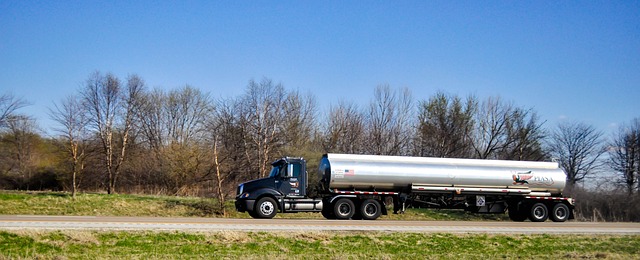Small fleet liability coverage is crucial insurance for businesses operating multiple vehicles, protecting against property damage, personal injury, and legal fees. By understanding policy options, considering limits, deductibles, and exclusions, operators ensure business continuity and mitigate financial risks from on-the-road incidents. Building resilience includes comprehensive strategies like general liability, commercial auto insurance, and additional coverages to enhance risk management. Fleet safety also involves driver training, regular vehicle maintenance, technology integration, and fleet management software for proactive monitoring beyond liability coverage.
In today’s dynamic transportation landscape, building resilience through robust insurance coverage is paramount for small fleet operators. This comprehensive guide delves into the essential components of understanding and managing risks associated with fleet operations. From identifying potential hazards to exploring top insurance coverage options, we provide a strategic approach to safeguard your assets and mitigate financial exposure. Additionally, discover effective strategies to enhance fleet safety beyond insurance, ensuring a holistic approach to risk management for small fleets.
Understanding Small Fleet Liability Coverage: Essentials and Protects

Small fleet liability coverage is an essential component for any business operating a number of vehicles. It protects against a wide range of potential risks and liabilities that come with on-the-road operations, including property damage, personal injury, and legal costs. This type of insurance is tailored to cover small fleets, often providing comprehensive solutions that address specific needs such as liability for third-party damages, collision coverage, and medical payments for injured parties in accidents.
By understanding the essentials of small fleet liability coverage, businesses can ensure they are adequately protected against common risks. It’s crucial to compare different insurance options, considering factors like policy limits, deductibles, and exclusions to find a plan that aligns with the specific requirements of your fleet. This proactive approach helps maintain operational continuity, safeguard assets, and protect against potential financial burdens associated with unexpected events on the road.
Identifying Risks: Navigating Potential Hazards in Fleet Operations

In the dynamic landscape of fleet operations, identifying risks is a critical step in building resilience and ensuring optimal insurance coverage. Small fleet operators often face unique challenges, from mechanical failures to driver errors and unpredictable weather conditions. Navigating these potential hazards requires a thorough assessment of everyday operations and an understanding of the evolving regulatory environment.
By assessing routes, vehicle types, and driver behavior, operators can pinpoint areas prone to accidents or damage. This process involves scrutinizing historical data, evaluating risk factors, and consulting with industry experts. For instance, recognizing high-risk zones or seasons demands specific insurance considerations, such as securing adequate small fleet liability coverage to mitigate the impact of unforeseen events.
Top Insurance Coverage Options for Building Resilience in Fleets

When it comes to building resilience in fleet operations, one of the most crucial steps is securing adequate insurance coverage. For small fleets, focusing on comprehensive liability coverage is essential. This includes general liability insurance that protects against claims related to property damage and personal injuries caused by your vehicles or employees. Additionally, commercial auto insurance offers specific protection for fleet vehicles during operation, ensuring financial stability in case of accidents or damages.
Beyond basic liability, consider specialized options like physical damage coverages, which protect against losses from collisions, fire, theft, or vandalism. Liability for uninsured or underinsured motorists is also valuable, providing coverage when the at-fault driver doesn’t have sufficient insurance. Further enhancements include medical payments and no-fault benefits to assist in managing medical expenses for injured parties involved in fleet-related incidents. These tailored options collectively contribute to a robust risk management strategy, enabling small fleet operators to navigate unforeseen challenges with resilience and financial security.
Strategies to Enhance Fleet Safety Beyond Insurance: A Comprehensive Approach

In addition to securing adequate insurance, enhancing fleet safety involves a multi-faceted approach tailored for your specific operational needs. One key strategy is implementing rigorous driver training programs that prioritize defensive driving techniques and vehicle inspection protocols. Regular maintenance checks, including timely repairs and replacements of worn-out parts, significantly reduce the risk of breakdowns and accidents.
Leveraging technology also plays a crucial role in building resilience. Investing in fleet management software enables real-time tracking, efficient route planning, and proactive monitoring of driver behavior. This data-driven approach allows for swift intervention when needed, ultimately contributing to safer operations and mitigating potential risks beyond insurance coverage, especially for small fleet liability coverage scenarios.
In conclusion, equipping your small fleet with robust liability coverage is a strategic step towards building resilience and mitigating risks. By understanding the essential components of small fleet liability coverage, identifying potential hazards, and exploring tailored insurance options, fleet operators can effectively manage uncertainties. Moreover, implementing comprehensive safety strategies beyond insurance further strengthens the overall operational resilience, ensuring the well-being of your vehicles, drivers, and business interests.
